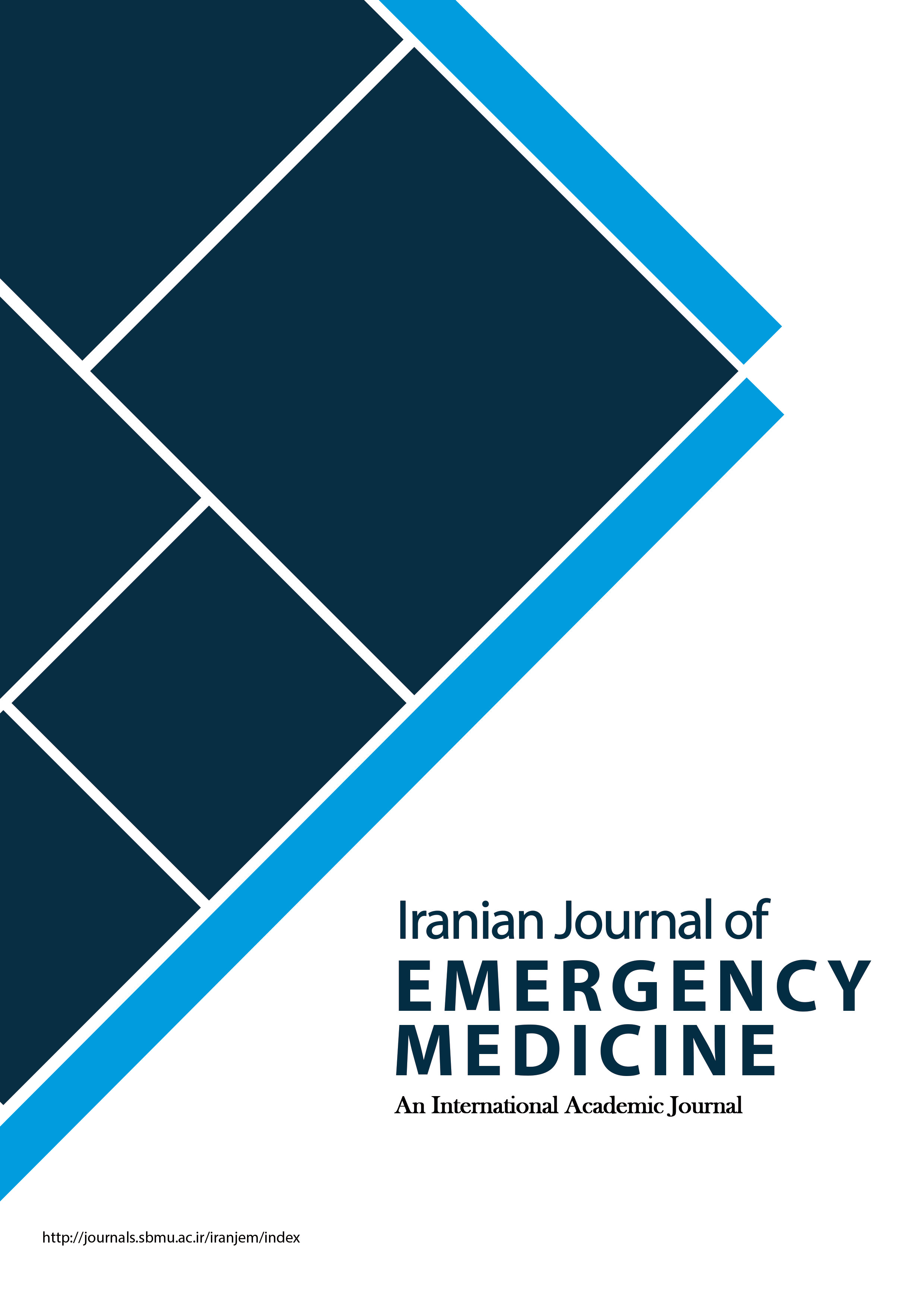Evaluating the Rate of Violence Against Pre-hospital Emergency Personnel; a Cross-sectional Study
Iranian Journal of Emergency Medicine,
Vol. 6 No. 1 (2019),
23 February 2019
,
Page e4
https://doi.org/10.22037/ijem.v6i1.24302
Abstract
Introduction: Workplace violence is a global problem the prevalence of which is increasing. All healthcare personnel are subject to violence, but considering the special conditions of pre-hospital emergency, its personnel are exposed to a higher rate of workplace violence compared to other healthcare workers. Methods: This was a cross-sectional study and the study population consisted of pre-hospital emergency personnel of East-Azerbaijan province, Iran. The sampling method was simple random sampling. Results: A total of 77 participants were included all of whom were male. The average age of the participants was 34.4 ± 7.5 years and their average work experience was 9.58 ± 5.7 years. More than half of the pre-hospital emergency personnel had faced violence by patients twice a week or more throughout the previous year. In 32.5% of the cases, pre-hospital emergency medical technicians had experienced violence by a patient’s friend or relative. Conclusion: The rate of violence against pre-hospital emergency medical technicians is high.- Violence
- Emergency medical services
- Emergency medical technicians
- Emergencies
How to Cite
References
Dean JM, Vernon DD, Cook L, Nechodom P, Reading J, Suruda A. Probabilistic linkage of computerized ambulance and inpatient hospital discharge. Ann Emerg Med. 2001;37(6):616-26.
Chapman R, Styles I. An epidemic of abuse and violence: nurse on the front line. Accid Emerg Nurs. 2006;14(4):245-9.
Corbett SW, Grange JT, Thomas TL. Exposure of prehospital care providers to violence. Prehosp Emerg Care. 1998;2:127–31.
Mechem CC, Dickinson ET, Shofer FS, et al. Injuries from assaults on paramedics and firefighters in an urban emergency medical services system. Prehosp Emerg Care 2002;6:396–401.
Suserund B, Blomquist M, Johansson I. Experiences of threats and violence in the Swedish Ambulance Service. Accid Emerg Nurs. 2002;10:127–35
Salimi J, Ezazi Erdi L, Karbakhsh Davari M. Violence against nurses in non-psychiatry emergency wards. Forensic Medicine. 2007; 12(4): 202-9.
Zamanzadeh V, Soliman-Nejad N, Abdullah Zadeh F. Nature of violence toward nurses working in East Azerbaijan State hospitals. Med J Tabriz Univ Med Sci. 2007; 29(2): 61-6.
Boyle M, Koritsas S, Coles J, Stanley J. A pilot study of workplace violence towards paramedics. Emerg Med J. 2007; 24(11):760-3.
Sezaer,K. Turkish nurses experience of verbal abuse at work. Psychiatric nursing J. 2008; 22,PP. 200-207.
Jessica L Taylor,Lynn Rew. A systematic review of the literature: workplace violence in the emergency department. Journal of Clinical Nursing. 2011;20(7-8):1072-85.
Sheikh-Bardsiri H, Eskandarzadeh S, Aminizadeh M, Sarhadi M, Khademipour Gh, Mousavi M. The Frequency of Violence in Workplace against Emergency Care Personnel in Kerman, Iran, and the Factors Affecting the Occurrence. J Manage Med Inform Sch 2014; 1(2): 111-7.
Blair L. Bigham , MSc, ACPf, Jan L. Jensen , MAHSR, ACP, Walter Tavares , PhD, ACP, Ian R. Drennan , PhD, ACP, Humaira Saleem , BSc, PCP, Katie N. Dainty , PhD & show all Pages 489-494 | Published online: 15 May 2014.
Akbari MA, Allah bakhshian A , Rahmani A, Dadashzadeh A, Namdar H. Assessing workplace violence toward EMS' personnel in prehospital settings of East Azerbaijan Province. Ir J Forensic Med. 2009; 15 (2) :100-107.
- Abstract Viewed: 453 times
- PDF (فارسی) Downloaded: 257 times
- HTML (فارسی) Downloaded: 35 times



